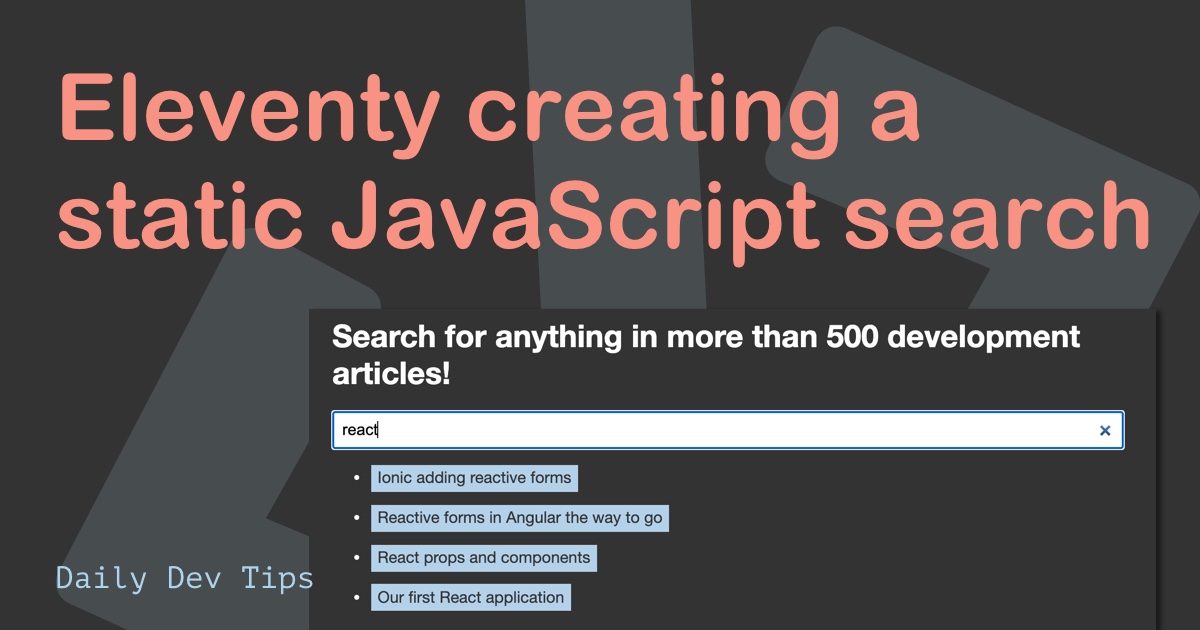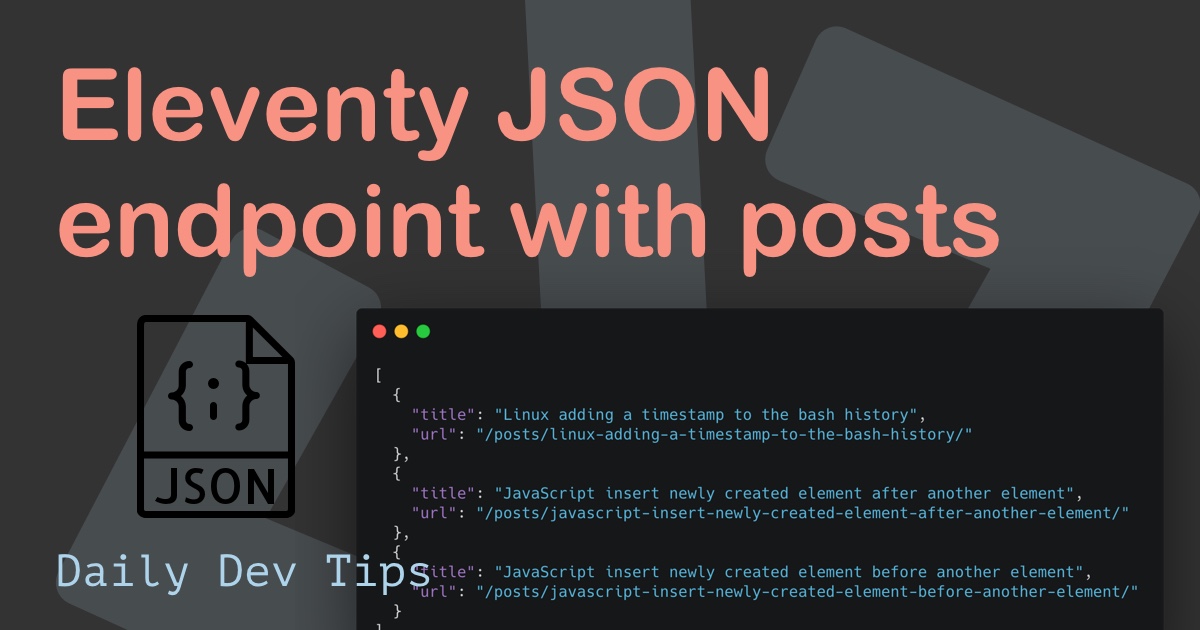Ever wondered what powers this beautiful blog? It's a static site generator (SSG) called Eleventy, which is super simple to get started with.
But the main reason for me to use Eleventy (11ty) is that it's so blazing fast and customizable.
Yes, I've tried some others like jekyll, but somehow 11ty was much easier for me (opinion yes 🤫)
Let's learn how to create a blog with Eleventy! 🔥
Setting up the project
Like other articles like this one about setting up node.js, we start by creating a basic folder structure.
mkdir blog
cd blogThis will create a' blog' directory and navigate into it.
npm installThis will install a basic node application.
npm install --save-dev @11ty/eleventyThis will add Eleventy to our package. According to their docs, a local installation is preferred over a global one.
That's it; We can now start working on adding pages in 11ty.
Adding a homepage to Eleventy
Of course, every website/blog needs a homepage. So let's start with opening the project in your favorite code editor.
First, we will add a file in our root called index.njk
njk is short for
[Nunjucks](https://mozilla.github.io/nunjucks/)which is a templating language
---
layout: layouts/home.njk
---
<h1>Latest posts will come here</h1>As you can see, it's a mix between Markdown and Layout.
We define a layout for this file up top layouts/home.njk, which we will create in a bit.
Now let's create the layout structure.
Create a folder called _includes in which we create another folder, layouts.
First, we create our base layout. Create a file called base.njk
<!DOCTYPE html>
<html lang="en">
<head>
<meta charset="utf-8" />
<meta name="viewport" content="width=device-width, initial-scale=1.0" />
<title>{{ renderData.title or title or metadata.title }}</title>
<meta
name="Description"
content="{{ renderData.description or description or metadata.description }}"
/>
<link rel="stylesheet" href="{{ '/css/index.css' | url }}" />
</head>
<body>
<main {% if templateClass %} class="{{ templateClass }}" {% endif %}>
{{ content | safe }}
</main>
</body>
</html>And our home.njk file
---
layout: layouts/base.njk
templateClass: tmpl-home
---
{{ content | safe }}Running Eleventy locally
To see the blog we created with Eleventy so far, run the following command in your terminal:
npx eleventy --serveThe open up http://localhost:8080 to see the blog!
It is nothing fancy, but it should show an H1 with the text Latest posts will come here.
Blog functionality with Eleventy
A blog wouldn't be much without actual blog posts. So let's dive into creating some blog posts.
Start by creating a new folder in your root called posts. We will then add 5 Markdown files.
---
title: Post number 1
description: Whatever you want to say
date: 2020-04-17
tags:
- posts
layout: ../../layouts/Post.astro
---
# Lorem ipsum dolar si amet!?
Yes! I agreeFollow through these until you have 5. Let's call them post-one.md.
The critical part here is the tags option, we can have multiple tags, but in this case, we set one being posts. This will become our collection!
Also, we mention a new layout here, so lets create _includes/layouts/post.njk
---
layout: layouts/base.njk
templateClass: tmpl-post
---
<p><a href="{{ '/' | url }}">Back home</a></p>
<hr />
<h1>{{ title }}</h1>
{{ content | safe }}We extend the base template again and add an essential back to home button.
Then we show the title of this blog post and the content.
Now, let's go back to our index.njk file and change it to the following:
---
layout: layouts/home.njk
---
<h1>Latest posts</h1>
{% set postslist = collections.posts %} {% include "postslist.njk" %}As mentioned in the post files, we included a tag called posts, and here we are getting those collections called posts!
You can also use
collections.allto get ALL collections.
Now let's make the actual postlist.njk
<ul>
{%- for post in postslist -%}
<li><a href="{{ post.url }}">{{ post.url }}</a></li>
{%- endfor -%}
</ul>Here we loop through our post list and create a URL to that specific post.
Now rerun the following command:
npx eleventy --serveYes!
We now have our working 11ty blog. Let's work from here and make it more awesome!
You can find this project on Github here.
See how we can host this blog on Netlify.
Want to learn how to add a page to this blog?
Thank you for reading, and let's connect!
Thank you for reading my blog. Feel free to subscribe to my email newsletter and connect on Facebook or Twitter

